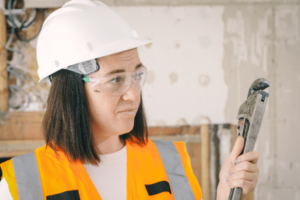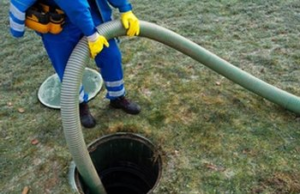Plumbing is a diverse profession that involves working with various tools and equipment. It requires a high level of problem-solving skills, physical stamina, and strength.
Plumbers Lexington KY install and repair pipes, fixtures, and appliances such as toilets, sinks, and water heaters. They also interpret blueprints and building codes to plan plumbing system installations.

Plumbers are responsible for installing, maintaining, and repairing the water and sewage systems that keep homes and businesses functioning properly. They use their building codes and regulations knowledge to ensure that all installations are safe and meet local standards. This includes ensuring that pipes are connected correctly and working with gas lines to install and repair appliances.
They also inspect plumbing systems to identify any potential problems or violations of building codes. This can involve using specialized equipment like video cameras to examine pipes or pressure gauges to test for leaks. Plumbers then take steps to correct the issue and prevent future problems.
In addition to installing new piping, plumbers can also repair or replace existing fixtures like taps, toilets, showers, and sinks. This may involve removing old fixtures and breaking down walls to access the piping underneath, or replacing worn out parts like valves and washers. Plumbers can also install new appliances like dishwashers and washing machines.
Because of the variety of tasks they perform, plumbers need to have a wide range of skills. They must be comfortable with the physical demands of their job, including lifting heavy objects and working in tight spaces. They must also be familiar with a variety of tools and be able to troubleshoot issues quickly and efficiently.
Plumbers often work with clients directly, so they must be personable and friendly. They should be able to explain complex issues in simple terms and answer questions clearly. They should also be willing to learn new skills and techniques to improve their performance, or to handle challenging situations. This is particularly important when working with customers who are stressed or upset about a plumbing problem.
Maintenance
Plumbers are responsible for the installation and maintenance of piping systems in residential, commercial, and industrial buildings. Their duties include interpreting blueprints and building codes to ensure the correct placement of pipes, fixtures, and appliances. They must be able to troubleshoot problems and repair or replace components when necessary. Plumbers also work with contractors and construction crews to ensure that plumbing systems are integrated seamlessly into new building projects.
Pipes and Fixtures
Plumbers install a variety of pipes and plumbing fixtures, including sinks, toilets, bathtubs, showers, water heaters, and more. They can also install drainage and sewer systems. In some cases, they may need to dig trenches in order to access underground pipes. Plumbers are trained to use a variety of tools to perform their job, including wrenches, pipe cutters, soldering equipment, and specialized diagnostic equipment. They are skilled at troubleshooting and must be able to identify and repair issues based on the symptoms they observe or the information provided by clients.
Maintaining a plumbing system is essential to ensuring the health and safety of occupants. This is particularly true in homes with older plumbing, which is more likely to experience leaks and other problems. Regular inspections and repairs can prevent these issues from occurring. In addition, a plumbing professional can help homeowners choose energy-efficient pipes and fixtures that will save them money on their utility bills.
Repair
Many plumbing problems have easy solutions for homeowners to fix on their own, but some require a professional. Plumbers are trained to diagnose a problem based on its symptoms and repair it promptly using the right tools for the job. This ensures that the problem is fixed the first time around and prevents further damage to the system in the future.
Common plumbing repairs include fixing leaks and clogs. Plumbers use high-powered water jets to clear out drains and pipes clogged with hair, paper products, or other insoluble materials. They can also replace corroded water heaters or fix broken faucets. Plumbers can even install or repair sump pumps, sewer systems, and other large-scale plumbing systems for industrial and commercial properties.
Leaks are one of the most common problems that homeowners call plumbers for. These can occur anywhere in the plumbing system and are often caused by worn washers, faulty joints, or tree roots. Plumbers can use pipe patches or sleeves to cover up the leak and prevent it from spreading, but this is only a temporary solution. Plumbers can also use a camera to inspect the pipes and find the source of the problem.
Sanitary plumbers specialize in repairing and maintaining the plumbing systems that handle human waste in homes and businesses. They can also install sewage disposal systems and clean-up appliances. These plumbers must be licensed by their state or municipality to work in this field.
Industrial plumbers deal with specialized plumbing systems in factories, power plants, and other industrial settings. They must have extensive knowledge of a wide range of topics, including hazardous waste management and compliance with local regulations. These plumbers also need to have strong communication skills to relay information to other members of a construction crew.
Inspection
Plumbing inspections help identify and address problems before they worsen. Plumbers have the experience, specialized equipment and depth of knowledge to thoroughly assess all parts of your plumbing system. They will check both visible water supply lines as well as those inside walls and behind fixtures for leaks, corrosion, damage, clogs and more. They will also test water pressure to ensure it’s within the recommended range. Leaks and other problems like clogged drains and insufficient water flow are often caused by underlying issues that can be addressed during a plumbing inspection.
For example, a lack of adequate slope for waste drain lines can lead to clogs and slow drainage. A plumber will inspect and adjust pipe slope as needed. Similarly, insufficient venting for gas lines can cause carbon monoxide poisoning, so a plumber will ensure exhaust gases are properly vented. They will also check the condition of fixtures, appliances and water heaters for signs of rust or corrosion and ensure they are up to code.
A visual inspection can only reveal so much, so plumbers will sometimes use a high-definition camera to get a closer look at pipes and drains. This helps them spot potential issues that may not be obvious with a visual inspection. If a plumber suspects there are problems with your underground pipes, they can also snake a drain auger or an endoscope into the affected pipes to check for blockages and other damage.
Besides identifying issues that can be fixed during an inspection, plumbing services can also prevent problems from happening in the first place. For example, a plumber can detect a leaky water heater before it fails and recommend replacement before the problem gets worse. They can also recommend routine maintenance to extend the lifespan of your plumbing fixtures, pipes and appliances.
Customer Service
Customer service is an important aspect of plumbing, as plumbers often work in customers’ homes or businesses and must be courteous and respectful. They also need to explain their work and costs clearly so that the customer understands what needs to be done. In addition, plumbing companies can improve their customer service by offering loyalty programs that reward repeat customers and referral incentives to encourage new ones.
Plumbers also collaborate with other professionals on construction teams to ensure that the plumbing system integrates seamlessly into the building project and meets all applicable standards and regulations. For example, they may need to read blueprints and architectural plans to determine the best placement for pipes and fixtures. They also may need to inspect sewer systems and water lines for leaks, blockages, and damage.
Because of the nature of their work, plumbers must be available for emergency calls. This means that they must answer the phone promptly and provide customers with helpful information over the phone, such as what time they can expect a plumber to arrive. Additionally, they must be able to diagnose problems over the phone and suggest an appropriate course of action.
Finally, plumbing businesses can enhance their customer service by encouraging their plumbers to engage with customers on social media. This helps build trust and brand awareness, and it can help customers find the right plumber for their needs. Customer reviews can also help potential customers decide whether to use a certain plumbing business, so it’s important for plumbers to respond quickly and professionally to any negative feedback. This shows that the company takes customer satisfaction seriously and is committed to providing top-notch service.



